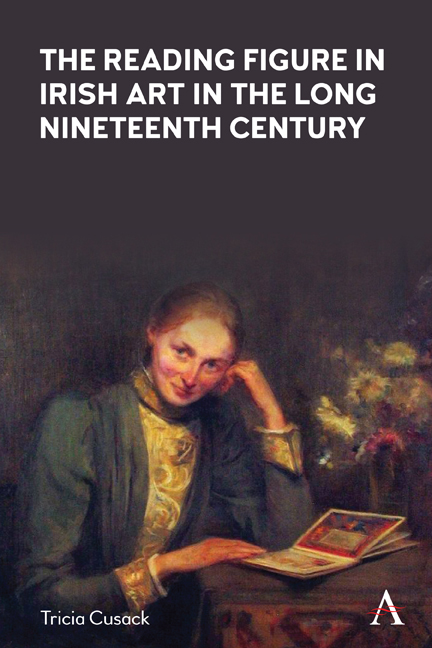Book contents
- Frontmatter
- Contents
- List of Figures
- Acknowledgements
- Introduction
- 1 Imperial Man, Manly Nationalism and the Unmanly Reader
- 2 ‘Creatures of a Different Breed’: Women Readers and Patriarchal Discourse
- 3 The Shaping of the New Woman in Ireland
- 4 The Silent Reader and the Fictive Viewer
- 5 A Room of Her Own: Four New Women in Dublin
- Conclusion
- Notes
- Works Referenced
- Index
- Frontmatter
- Contents
- List of Figures
- Acknowledgements
- Introduction
- 1 Imperial Man, Manly Nationalism and the Unmanly Reader
- 2 ‘Creatures of a Different Breed’: Women Readers and Patriarchal Discourse
- 3 The Shaping of the New Woman in Ireland
- 4 The Silent Reader and the Fictive Viewer
- 5 A Room of Her Own: Four New Women in Dublin
- Conclusion
- Notes
- Works Referenced
- Index
Summary
My own early enthusiasm for reading began properly through a serendipitous encounter with George Eliot's (or Mary Ann Evans’s) novel, Silas Marner (1861), picked from the shelf of my school library in Taupo, New Zealand. At the first page, I was enthralled by the language, so complex, yet so clear and its vivid evocation of a strange race of peripatetic weavers that lived on the fringes of a suspicious village community. Such writing not only engaged the reader but also demanded full concentration. Art has its own modes of engaging an audience. It is effective in making abstract ideas concrete, for example, the notions of concentration or studiousness, as we shall see later when examining images of readers. Not being explicated, art invites interpretation. I am intrigued by how art, like literature, not only forms part of culture but helps to constitute it in different historical contexts. An image of a reading figure does not merely show a figure that reads but is a concatenation of signs incorporating a host of historical and cultural references. Often unrecognised, art transmits ideologies.
Continuing a long fascination with literature and art of the late nineteenth and early twentieth centuries, I decided to examine visual representations of readers during that period. My focus on Ireland in this context is for several reasons. Until relatively recently, Ireland was better known for its production of literature than for its art. Yet Ireland, particularly Dublin, had a lively art scene prior to independence and the onset of the Catholic state. The Municipal Gallery of Modern Art, established in Dublin in 1908, constituted ‘the first real attempt at a representative collection of Modern Art to be found in the British Isles’. In particular, contemporary Irish art included some distinctive and intriguing representations of readers. This art and period are the focus of the present volume. I use the shorthand chronology of the ‘long nineteenth century’ in preference to a less flexible delineation relying on the end of one century or the start of another one, with which historical events may not neatly concur. The long nineteenth century commonly refers to the period from the French Revolution of 1789 to the start of the First World War in 1914.
- Type
- Chapter
- Information
- Publisher: Anthem PressPrint publication year: 2022



